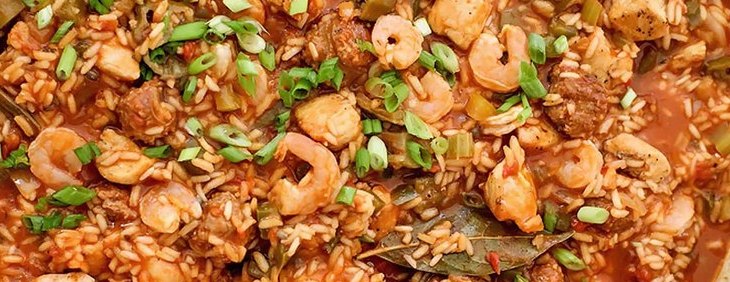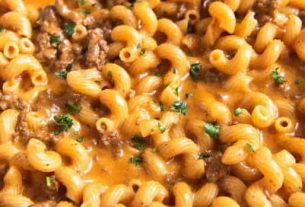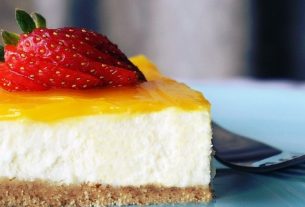Jambalaya can be described as a delicious meal and in case you have some leftovers, you might have been wondering whether or not you can freeze it and how you should go about get it frozen if at all you can freeze it.
You can freeze jambalaya but it depends on the type of recipe you used to prepare it because you might have had to consider some nuance before you cover up the meal and throw it inside the freezer.
What we want to check out in this guide is to find out the best method to use to freeze your jambalaya. We will check out the process of freezing for the standard New Orleans’ creole jambalaya whose constituents are pepper, creole seasoning, bell peppers, celery, onions, tomatoes, shrimp, Andouille sausage, chicken, and rice.
Please note that even if the jambalaya has slightly different ingredients from what we have listed above, be assured that the principles and guidelines for freezing your jambalaya are still the same as this one. We will first check out the general idea behind freezing your jambalaya as well as those things you need to consider, we will then check out the steps you need to follow when you want to undergo the process of freezing so that your jambalaya will end up tasting excellent after you have reheated it.
We will then go briefly over those methods we can use to reheat them before we will check out some questions as regards the process of freezing your jambalaya. You are recommended to continue reading to get an overview of how you can successfully freeze your jambalaya to keep it safe.
Freezing Jambalaya: Things to Consider
Even though you can safely freeze your jambalaya and then reheat it to eat it any time you like, your jambalaya is likely to have a better taste after you freshly prepare it than when you reheat them from your freezer. If you, however, have cooked too much of this meal and you wouldn’t want your jambalaya to get spoilt, the best option is to freeze it. Since this meal is a meal that has combined in it several ingredients, it isn’t just simple to freeze as just sealing its pack and putting it inside your freezer. Although you are allowed to proceed with this, you will likely encounter two major problems:
- The texture of the shrimps will turn flabby
- Your rice will turn mushy
You need to take some precautions if you want to solve these issues.
Preventing the Texture of the Shrimp from Getting Flabby
The unfortunate thing is that you might not be able to do much to stop the texture of the shrimp from being flabby after freezing your jambalaya. You may have to make a recipe of jambalaya that you will not need shrimp for. However, one good news is that in as much as you follow through the right process of freezing and reheating that we will describe below, your meal will not be ruined because of the change in the texture of the shrimp.
Preventing Rice from Getting Mushy
If you don’t want your frozen rice to become mushy, you have three possible things that can be done to prevent it. The first thing is to cook your jambalaya without the rice, then when you want to take it out of frozen to serve it, use your pot to boil your frozen jambalaya and then add your rice to it. You will get your rice freshly cooked at this point and you will not be at the risk of it getting mushy.
The second thing you can do if you might not get that chance to start adding the rice to your jambalaya, then cook your jambalaya simply in a similar way you usually cook it but try not to completely cook the rice. If you undercook your rice, there won’t be enough moisture within it and it means when you freeze it, it won’t turn mushy. The rice that has been undercooked will then get fully cooked when you complete the process of reheating.
If, however, your jambalaya has already been cooked with the rice fully cooked to match up the jambalaya and you now have some leftovers that will have to be frozen, it means the two methods above cannot help you, what you could do in this case is to store your jambalaya inside your vacuum-sealed food saver container so that the moisture within the rice will be prevented from escaping and it will prevent it from turning into a mess, mushy, or clumpy.
Another method to use is for you to make sure that your jambalaya is well sealed as you place it inside the freezer. You should use a Ziploc bag, ensure excess air is out of it as possible as you can by flattening it out, and then suck other air out by using a kitchen cooking vacuum machine. One benefit of this method will be that you can reheat your jambalaya even with the Ziploc bag when you want to serve to eat it.
Freezing Jambalaya: Follow these Steps
Before we start, our assumption is that you already have a fully prepared meal of jambalaya with the rice. If you want to prevent any risk of your risk getting mushy, you can add your rice when you are undergoing the process of reheating.
Step 1: Begin by cooking your jambalaya in full batch.
Step 2: Before you put your jambalaya inside the freezer, allow it to cool to room temperature or cool it inside the fridge.
Step 3: After your jambalaya has been cooled, break the meal into a two-cup portion and put the portions inside your freezer-safe container. Ensure you flatten your food to become thin in each of the bags. Your jambalaya can also be placed inside air-tight Tupperware containers or Ziploc bags but your vacuum sealer is likely to be the best to be used to keep your jambalaya safe because it will help you prevent any likelihood of moisture loss from your meal.
Step 4: Put the sealed jambalaya inside your freezer to become frozen.

Reheating Frozen Jambalaya
There are three options you have to reheat your frozen jambalaya and they include an oven, a stovetop, or a microwave. If the recipe of jambalaya contains shrimp, be prepared to get your shrimp flabby, hard, and rubbery after you complete the process of reheating.
Reheating Jambalaya in an Oven
This is the longest method and you might also risk your jambalaya to dry out. It is optional to thaw your jambalaya when you are using an oven to reheat it. If you had thawed it inside the refrigerator, the reheating process will take lesser time and it will use longer time to reheat if you place it directly from frozen inside your oven.
To use your oven to reheat your jambalaya, first allow the oven to preheat to a temperature of 300°F then put your jambalaya inside your oven-friendly dish or tray before you use aluminum foil to cover it and then allow it to heat for about 20 to 30 minutes depending on if you thawed it before freezing or not.
Reheating Jambalaya on a Stovetop
There are two options for you if you want to reheat your jambalaya with a stovetop:
The first one is to use a skillet by placing your jambalaya from frozen on it pouring a few tablespoons of water and allow it to heat under low heat as you occasionally stir. The second method you can use is to put your frozen jambalaya with the bag inside a pot of boiling water before allowing it to become heated up.
Both of the two methods are very effective by when you use a skillet, you may be more creative as you can add some additional seasonings or sauces though it will take a longer time. Using boiling water will be quick and it will be quite simple.
Reheating Jambalaya in a Microwave
This is considered to be the easiest and fastest method to reheat your jambalaya and it will also give you the unlikely predictable results because a microwave has a natural tendency not to heat food evenly.
All you need to reheat your jambalaya inside the microwave is to first allow your jambalaya to defrost inside your refrigerator for at least 24 hours before you then put it inside your microwavable container, use your damp paper towels to cover it, and then put it in your microwave together with a glass of water so that it will not dry out. Allow the jambalaya to microwave in increments of 30 seconds by stirring each time of the increment until it becomes steaming hot before you remove it.
Related Questions
How long can I keep jambalaya in the fridge for before it goes bad?
You should eat your jambalaya stored inside your refrigerator within four days because you risk getting yourself food poisoning after that.
Can you refreeze jambalaya after reheating it?
Jambalaya can be refrozen as much as you want it but ensure you follow the process of freezing above.


